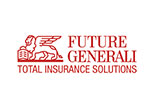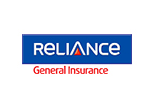

- Save upto 85%*Lowest Car Premiums
- 80 Lakh+Happy Customers
- Claim Support7 days a week
*TP price for less than 1000cc four-wheeler. All savings/offers are provided by the Insurers which are subject to modification. Terms and conditions apply
- Car No.
- Select Plan
- Policy Issued
Own Damage Car Insurance Plans
- CASHLESS GARAGES 6,800
- CLAIMS SETTLED 89%
- ZERO DEP. CLAIMS UNLIMITED
Maximum Cashless Garages
Over Night Vehicle Repairs
24x7 Roadside Assistance
Quick Claim Settlement
- CASHLESS GARAGES 3,100
- CLAIMS SETTLED 95%
- COMPREHENSIVE CLAIMS UNLIMITED
Towing Assistance (For Accidents)
Coverage Outside India
PSU Provider
Quick Claim Settlement
What is Own Damage Car Insurance?
A stand alone own damage or SAOD or own damage car insurance is a type of motor insurance that safeguards your car from any damage caused due to theft, fire, burglary, man made disasters like riots, vandalism, terrorism or natural disaster like flood, earthquake, storms, landslides, etc.
An SAOD car insurance is cheaper than a comprehensive car insurance and gives you protection to your vehicle that the mandatory third party liability car insurance won’t cover. When you are a new vehicle owner, buying a stand alone own damage car insurance is a great way to get protection for your vehicle. When you buy a third party car insurance, this SAOD insurance can be bought as a bundle to protect your vehicle.
Key Features of Own Damage Car Insurance
|
Features |
Coverage Under Stand Alone Own Damage Car Insurance |
|
Third Party Liability Insurance |
No |
|
Stand Alone Own Damage Insurance |
Yes |
|
Personal Accident Cover |
Yes |
|
Options to Choose Add Ons |
Yes |
|
No Claim Bonus (NCB) |
Yes, %age depends on insurer to insurer |
|
Cashless Repairs |
Yes |
|
Cashless Garages |
Yes, number depends on insurer to insurer |
|
Renewal of Insurance Online |
Yes |
Benefits of Stand Alone OD Car Insurance
Mentioned below are the main benefits of having a stand alone own damage car insurance:
- Save Money Since SAOD is Cheaper Than Comprehensive Car Insurance: When you buy a stand alone own damage car insurance, it is cheaper than buying comprehensive car insurance. This is because buying a comprehensive car insurance is a pricey affair but SAOD has made it simpler and more economical.
- Flexibility Regarding Choice of Insurer: When you buy an SAOD car insurance, you have the flexibility of choosing and changing your insurer after careful evaluation of your requirements every year. You also have the flexibility to purchase the plan from a completely different insurance company than the one you purchased your third party insurance from.
- Not Obligated to Opt for Long Term Insurance: New car owners are not obligated to purchase comprehensive car insurance. This means that a policyholder can choose bundled insurance - 3 years third party liability and 1 year SAOD after buying a new car, and renew SAOD insurance based on their requirement in the next renewal cycle.
What is Covered in an OD Car Insurance (Inclusions)?
- Accidental Damages: In case your car gets damaged in an accident, this car insurance covers the damage cost (maximum to the price mentioned as your Insured Declared Value or IDV).
- Natural Disasters: Any damage to your car due to a natural disaster like storm, flood, landslide, earthquake etc are all covered under a stand alone own damage car insurance.
- Fire and Explosions: Stand alone own damage insurance covers the cost incurred on your car due to a fire or an explosion.
- Man Made Disasters: This insurance also covers the cost of repair due to any damage caused by man made disasters like vandalism, riot, etc.
- Total Loss: In case your car gets damaged beyond repair, OD insurance covers the cost of the same.
- Vehicle Theft: In case your car gets stolen, your SAOD insurance covers the cost of such losses.
What is Not Covered Under OD Car Insurance (Exclusions)?
- Third Party Liability: Your OD car insurance does not cover any financial or legal liabilities of a third party such as death or injury to the third party or damage to their vehicle or other property.
- Driving Under The Influence of Alcohol: If you are driving under the influence of alcohol, your insurer will not cover the cost or repair under SAOD car insurance.
- Driving Under The Influence of Drugs: Your stand alone own damage insurance does not cover the cost of any damage or repair of your car if you were driving under the influence of drugs.
- Driving Without A Valid Licence: In case you are met with an accident while driving without a valid driving licence or with an expired licence, your OD insurance will not bear the cost of any damage or repair of your car.
- Driving With A Learner’s Licence*: If you are in an accident and driving with a learner’s licence without an adult supervision, your insurer will not pay for the damage or repair cost.
- Consequential Damage: Any subsequent damage caused due to accident, fire, etc is excluded from your OD insurance.
- Electrical or Mechanical Breakdown: Your OD car insurance does not cover any damage that occurs to your car due to electrical or mechanical breakdown.
- Wear and Tear: Your car’s regular wear and tear is not covered under own damage car insurance unless you have also purchased specific add ons for the same.
- Vehicle Used For Commercial Purpose: If your personal vehicle is used for any commercial purpose during which the vehicle meets with an accident, your car insurance company will not cover the cost of damage or repair.
- Beyond Policy Terms and Conditions: Your car insurance company will not cover for any damage caused to the car which is outside the policy terms and conditions.
How Do You Calculate the Premium for Own Damage Insurance?
Own damage insurance is not an add-on. It is most helpful for those who own third-party insurance policies. Just to revise,own damage insurance covers any damage to your vehicle caused due to road accidents, thefts, fire incidents, vandalism, etc. One must also note that only third-party insurance owners can purchase an own-damage cover. Like comprehensive insurance policies, own damage cover premiums are calculated based on three important factors:
- The Insured Declared Value (IDV) of your vehicle.
- Age of the car.
- The city in which you drive the car.
So, the formula to calculate the premium is:
Own Damage Premium= IDV x Premium Rate (declared by the insurance provider) + Add-ons – (No Claim Bonus if any).
How To Buy Own Damage Car Insurance from InsuranceDekho?
Foll the below steps to buy a Stand Alone Own Damage (SAOD) car insurance online with InsuranceDekho:
Step 1: Enter Your Car Registration Number
Visit the car insurance home page on InsuranceDekho website. Fill the form on the front page. In case you are buying OD car insurance for a brand new car, click on the prompt right below the car registration form “brand new car.” Enter your car registration number and click on continue.
Note: In case you have selected the prompt “brand new car,” you will have to choose your car brand, model, fuel type, engine configuration, model year and city of purchase.
Step 2: Select A Suitable Plan
Now you will be displayed a list of SAOD insurance plans. Select a plan as per your need and click on “Price”, you will be able to move to the next step now.
Step 3: Verify Details & Make Payment
Now verify owner and vehicle details and make payment through UPI, net banking, debit or credit card.
Step 4: Download Policy Document
You will now be able to download your policy document from InsuranceDekho.
Offline Purchase from InsuranceDekho
If you would like to buy your car insurance from InsuranceDekho offline you can connect with one of our insurance advisors on call here +91-7551196989 or by emailing us at support@insurancedekho.com.
Documents Required
Keep the below mentioned documents in place when you are planning to buy a stand alone own damage car insurance:
- Identity Proof: Documents like your Passport, Aadhaar Card, Driving Licence, Voter ID.
- Address Proof: Documents like your Voter ID, Passport or Aadhar Card is required as proof of your address.
- Registration Certificate (RC): Your car’s registration certificate or RC.
- Passport Size Photograph: Two recent passport size photographs.
- Previous Policy Number: Your old car insurance policy number for reference.
Addons for Own Damage Car Insurance
With the help of add ons, the policyholder can enhance their OD car insurance policy. Some of the key add ons are mentioned below:
- Zero Depreciation Cover: With this cover, get your car price locked as a zero dep or nil depreciation cover does not let your car’s depreciation value impact you.
- Engine Protection Cover: With this cover, protect your car’s engine from any damage or repair.
- No Claim Bonus Protection Cover: A no claim bonus protection cover or NCB keeps your no claim bonus intact even after you make a claim.
- Roadside Assistance Cover: With this cover, get 24*7 roadside assistance from your insurer in case your car malfunctions or stops in the middle of the road.
- Daily Allowance Cover: With this cover, get a specific amount to travel through cabs or autos when your car is in the garage for repair.
- Consumables Cover: Protect your car’s nut, bolt, brake oil, engine oil, lubricant etc with this add on.
- Tyre Protect Cover: With this cover get benefits of repair or buying of new tyre for your car.
- Key Cover: Buy this cover to be tension free in case you lose your key, or need to repair or replace it.
- Electric Vehicle Battery Protection: This add on gives your EV vehicle’s battery full protection if you have an electric car.
- Electric Motor Protect: If you have an EV, this add on covers the electric motor of your car.
- Electric Vehicle Charger: In case your EV’s charging unit gets damaged or stolen, this add on will provide protection against that.
How To Renew Your Own Damage Car Insurance?
Step 1: Visit InsuranceDekho website
Visit the car insurance main page on InsuranceDekho’s website. Select Renew Policy from the header menu.
Step 2: Verify Details
Enter your mobile number in the pop up and tap on “Continue.” Verify your number through OTP.
Step 3: Select Your Policy and Review Details
From the list of all your open policies, select your OD car insurance policy. Review your policy before renewing, make changes if any and then proceed.
Step 4: Make Payment
Choose your preferred payment method to make the payment.
Calculate Your Car Insurance Price Online
Select your car brand

- Maruti
- Hyundai
- Honda
- Toyota
- Mahindra
Which city is your car registered in?
- Ahmedabad
- Bangalore
- Chandigarh
- Chennai

When did you buy your car?

Factors That Affect Your Own Damage Car Insurance Premium
Here are some of the key factors that impact the premium of your stand alone own damage car insurance premium:
- Claim History: The more claims you make in a given policy year, higher are the chances of your insurance premium increasing while renewing. It is advisable to not make claims for minor repairs and damages.
- Number of Add Ons: The total number of add ons you take along with your OD insurance also increases the price of your premium.
- Car’s Make, Model, Variant: Your car’s make, model, variant has an impact on the price of premium you will be paying. Typically, a luxury or premium car will have a higher premium than an economy car.
- Driving History: Your driving history will also have an impact on your car insurance premium. If you are someone who has a history of violating traffic rules, your premium price will be high.
- New or Pre-Owned Car: Depending on whether your car is new or pre-owned, the price of your car insurance premium will change. Usually, a new car has a lower premium than that of an old or pre-owned car.
- Deductibles: Deductibles are the amount you agree upon with your insurer that you will pay in case of any damage or repair work of the car.
- No Claim Bonus: If you have an NCB cover or you have not made any claims in the previous year, you get a no claim bonus discount while renewing your car insurance.
How To Raise a Claim for Your Own Damage Car Insurance?
Below are the conditions under which a claim can be raised for OD insurance:
- Own vehicle loss
- Own vehicle damage or repair
To raise the claim, you should have the following documents handy:
- Copy of your policy document
- Copy of car registration certificate or RC
- Copy of FIR
- Original Car Repair Bills
- Proof of Accident/ Mishap
Below are the steps to raise the claim:
- Inform Your Insurer: Inform your insurer immediately when you are planning to raise a claim due to any mishap or when you need repair or replacement of your car’s parts. In case your car is lost or stolen, you should still inform your insurance company immediately.
- Lodge An FIR: In case of loss of car or an accident, immediately file an FIR after collecting all evidence that you can (images and videos).
- Submit Document: Submit all documents required by your insurer to make your claim case stronger. Your insurer will now appoint a surveyor who will review the situation and submit a report to MACT (Motor Accident Claims Tribunal) in case of accidental damage or to the insurer in case of loss or theft of your car.
- Get Repair Done: Once the due diligence is over, you will now be able to get your car repaired with your insurer taking care of the cost or you will get back the money as per IDV in case of loss of car.
Own Damage Vs Third-party Car Insurance Vs Comprehensive Car Insurance
|
Parameters |
Own Damage Car Insurance |
Third Party Car Insurance |
Comprehensive Car Insurance |
|
Damages due to Natural disasters like Floods, Earthquakes, etc. |
Yes |
No |
Yes |
|
Damages due to theft or vandalism and other man made disasters |
Yes |
No |
Yes |
|
Add On Covers - Zero Depreciation, Roadside Assistance, Consumables Protect, etc |
Yes |
No |
Yes |
|
Car Value Customisation |
Yes |
No |
Yes |
|
Damages Due to Fire |
Yes |
No |
Yes |
|
Personal Accident Cover |
Yes |
Yes |
Yes |
|
Injury to Third Party |
No |
Yes |
Yes |
|
Damage to Third Party Property |
No |
Yes |
Yes |
Standalone Own Damage Car Insurance FAQ
-
-
-
-
How to file an own damage car insurance claim?
You can file an own-damage car insurance claim by following the given steps:
- Step 1: After the mishap or accident, immediately inform your insurance provider regarding the damage to your vehicle.
- Step 2: File a claim with your insurer. Insurance companies would then assign a surveyor to assess the damage to your car or You can also opt for Self-inspection, where your insurance provider will provide you with all the instructions. Availability of self-inspection facility is subject to the insurance company.
- Step 3: Select the mode of repair you wish to go for i.e cashless service through network garages or reimbursement.
-
Do I need to buy standalone own damage car insurance cover and third-party car insurance from the same insurance provider?
You can purchase standalone own damage insurance cover and third-party car insurance from the same insurance provider. However, it is not mandatory to purchase it from the same insurance company, you have the flexibility to purchase your own damage cover from any insurance provider you like.
Car Insurance Add-ons
Check Standalone Own Damage Car Insurance
 Acko
Acko Bajaj
Bajaj Cholamandalam
Cholamandalam Dhfl
Dhfl Digit
Digit Generali Central
Generali Central HDFC ERGO
HDFC ERGO ICICI Lombard
ICICI Lombard IFFCO Tokio
IFFCO Tokio Kotak
Kotak Liberty
Liberty Magma
Magma National
National Navi
Navi New India
New India Oriental
Oriental Raheja-QBE
Raheja-QBE Reliance
Reliance Royal Sundaram
Royal Sundaram SBI
SBI Shriram
Shriram TATA AIG
TATA AIG United India
United India Universal Sompo
Universal Sompo Zuno
Zuno
Disclaimer: InsuranceDekho does not endorse, rate or recommend any particular insurance company or insurance plan.












































